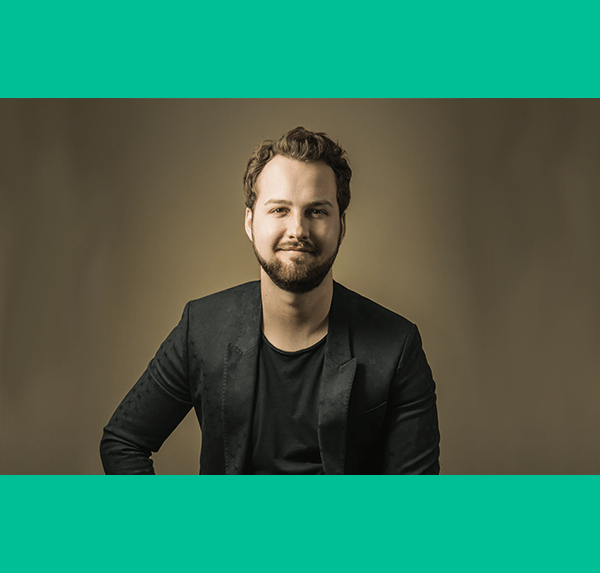What Will Work-life Balance Look Like After the Pandemic?
As part of our Alumni Success Talks, we invited Fiona Pattiselanno, brand and corporate marketing director at EMEA, at Medtronic, to talk about her experience with achieving work-life balance.
In a thoughtful discussion, Fiona explored how the idea of work-life balance is an ever-evolving one, and how it has been impacted by the pandemic.
What is work-life balance?
Work-life balance refers to the relationship your work and personal lives have with each other.
It’s an important aspect of any healthy work environment as, without it, employees can begin to feel stressed and burnt out in the workplace.
Since the pandemic and changes in routines, it’s become even more imperative that companies take the work-life balance of their employees seriously. Companies that are able to foster happier, healthier, and more productive environments for their employees will always be the ones that are more successful.
There isn’t a strict definition of what a good work-life balance looks like, as every person has their own individual attitude on the matter. These attitudes have also evolved as part of cultural, generational and economic influences.
Since the pandemic thoroughly altered many people’s opinion on work and the workplace, the concept of work-life balance has also taken a whole new direction.
How do the generations view work-life balance?
Work-life balance means many different things to different groups of people. One of the easiest ways to demonstrate this is through the outlooks of different generations.
The generational divide is especially apparent when it comes to work-life balance, with every generation having very different opinions on the workplace, and what they’re motivated by:
Baby boomers (1946-1964)
Baby boomers are known for being workaholics and extremely competitive in the workplace. They thrive when working in democratic environments and work best in teams – they also love a meeting!
This generation is primarily motivated by receiving recognition for their work, feeling valued by their employers, and receiving monetary rewards.
Generation X (1965-1981)
Generation X are much more efficient and self-reliant when it comes to their work, meaning that they don’t place as much importance on in-person meetings and working in teams.
They work best when they are in work environments that feel flexible and fun, and feel the most motivated when they are given freedom, the rules are removed and they get rewarded with time off.
Millennials (1982-1994)
The next generation, millennials, are extremely ambitious and feel comfortable when juggling different projects and multi-tasking.
In a work environment, they want somewhere that prioritizes collaboration, creativity and continuous feedback. This generation is also highly motivated by autonomy, being trusted by managers and being given time off as a reward.
Generation Z (1995-2012)
The final generation, Generation Z is intense, pragmatic and project-oriented. They work best in collaborative, fun, flexible work environments that have a clearly defined chain of command.
This generation likes face-to-face work and working in teams. They are mostly motivated by getting opportunities to advance in their role, and when they feel like they are getting involved in decision-making.
The new work norms during the pandemic
Since the pandemic started, the traditional ideas around work have been thrown upside down.
The health crisis has accelerated changes in the way we work. But these alterations were already starting to come into place prior to the pandemic, especially as younger generations have begun to demand greater freedom and autonomy.
People want to take ownership of their own lives, and we’ve all started to think more about the ways that our work and personal lives integrate with one other.
That’s not to say that the changes were beneficial for everyone. It has been a time of great uncertainty, and many people were rushed into working from home which in some cases proved difficult to handle.
People had to deal with things they’d never experienced before; from working in cramped spaces, setting up their technical equipment in their homes, and not seeing any of their colleagues. Most importantly, the lines between work and personal life quickly became blurred.
As people across the world start to return to the office, we’re going to see three main working models develop:
Fully-remote working
The majority of companies were forced to adopt a fully-remote working model during the height of the pandemic, and it’s something that many firms have continued.
This is where companies close their offices completely and require all employees to work full-time from home.
In this model, employees have more freedom to integrate their work into their personal life in a way that works for them. When managed correctly, it can be great for work-life balance, but it isn’t something that works for everyone.
Hybrid working
In hybrid working models, employees can decide where they want to work from. They can either work from their company’s office, from home, or choose to go to coworking spaces.
Activity-based working
The final working model is activity-based working, which is where companies look at their employee’s roles and personal circumstances to decide whether they should work in the office or not.
Some roles do not need to be performed on-site, but some employee’s activities dictate that they need to be in the office to do their work properly. For example, a receptionist needs to be in the office to greet visitors, whereas an IT team can carry out all their work from home.
The goal of this method is to provide flexibility to staff wherever possible, while still prioritizing productivity and collaboration.
The future of the workplace 2030+
The role of the workplace and its contribution to work-life balance will continue to change over the next few years.
As it develops, we’ll see the emergence of four different ‘workplaces’ that all need to be considered when seeking to provide employees with a good work-life balance.
The emotional workplace
The emotional workplace will revolve around culture, wellbeing, social capital and trust.
The physical workplace
This workplace will look at the future of physical offices, how our roles and purpose evolve, and whether there is even a need for physical offices in the future.
The technological workplace
As technology continues to advance, we must think about how it will foster new business models, ways of working and employee experiences.
The purposeful workplace
Finally, there is the purposeful workplace which will consider evolving ideas of leadership, organizational models, values and employee engagement.
Work-life balance is an essential aspect to take into account when considering employee health and productivity, and each company must find the methods that work for their organizations as a whole.










